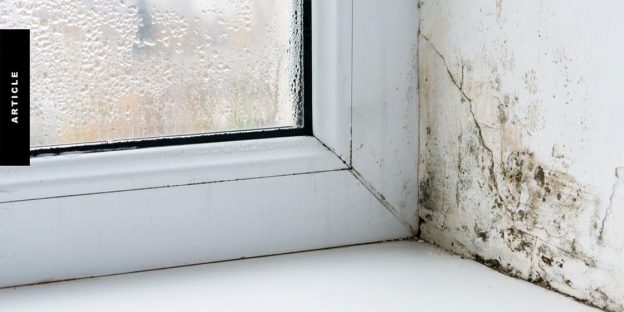Mould and dampness affect up to half of Australian homes. Could your investment property be one of them?
To grow, mould needs moisture, heat, darkness and poor airflow. It’s a year-round concern for landlords in Australia’s tropics. Elsewhere, mould can appear at any time if the micro-conditions are right.
As we’re at the tail end of La Niña #3, it may be an issue for your investment property. Mould is usually visible and can damage building structure, materials and content. It can also create or amplify a range of health issues for those exposed to it.
Here’s a rundown of state and territory governments’ advice on mould, including removal.
Is mould claimable?
Typically, most insurance policies will cover mould damage arising from or due to an insured event, such as:
- Burst or leaking pipes
- Storm or flood damage
- Wet area leakage, including from shower recesses
- Leaking appliances such as hot water services, dishwashers, refrigerators and toilets.
Once an insurer has verified an insured event has led to the damage, they’ll then need to establish there’s mould and what caused it. They’ll use a mould expert – a mycologist – for testing and insights into the possible cause(s) and source of the mould. Here’s an insight into their work and mould risks.
However, most policies explicitly exclude damage caused by mould, such as rising damp. This means insurers often won’t cover you for mould damage when it’s the primary or proximate cause.
Recent cases
Late last year, the Australian Financial Complaints Authority (AFCA) rejected a landlord’s claim that a storm had damaged a rental property leading to mould appearing, repair costs and loss of rent.
The insurer’s builder had been unable to find evidence the storm had damaged the roof, so there was no proof of a water entry point. Instead, leaves in the gutters and around the solar panels had caused dampness, leading to mould growth inside the home.
Therefore, ACFA determined it was due to the lack of property maintenance not the storm for the damage. Find out more from the ACFA’s full ruling.
In another recent case, a building owner’s negligence in not repairing leaks led to a tenant experiencing a total loss of her contents. ACFA ruled it was not the tenant’s responsibility to be aware of water coming into the property and causing mould. Her insurer was ordered to pay her $76,690, the amount for which she had insured her belongings. You can read the full determination here.
Meanwhile, ACFA also awarded landlords thousands of dollars in their claim for loss of rental income against an insurer. The latter had incorrectly determined their four mould-filled properties in Melbourne were habitable because only the basement was water damaged.
When is a landlord responsible?
In short, your obligation is to ensure the rental property meets health and safety laws and bylaws, is in a reasonable state of repair and you don’t delay repairs unnecessarily.
Landlords are responsible for addressing mould issues if it’s due to structural issues or poor maintenance/repair, including:
- A faulty pipe or indoor plumbing leaks
- A leak in the roof
- Surface water leaking into the premises
- Rising damp or other wet building foundations
- Exhaust fans or wall-mounted reverse cycling units that don’t work
- Malfunctioning gutters, including due to leaf debris, so water overflows into the home.
When is a tenant responsible?
Tenants are responsible for dealing with mould issues if it’s due to them:
- Not adequately ventilating the property, such as neglecting to switch on fans while showering or opening a window
- Leaving wet towels on the floor
- Not cleaning the home
- Leaving water to pool on tiles, or not cleaning up spills properly such as on a carpet
- Cooking without switching on the extractor fan
- Drying clothes on a hoist or in a drier indoors without then airing the room
- Leaving doors and windows open during rain events
- Avoiding wiping condensation from windows and walls
- Storing books or cardboard boxes in bulk, for instance, in a damp space.
Tenants are also responsible for noticing mould growing in their wardrobe, for example, so they don’t leave their clothes there. This ensures they minimise their losses.
And while one of the ACFA rulings above may create uncertainty about tenants’ obligations to tell landlords of water issues, tenants should tell you or the property agent when there’s an issue. For instance, if there’s a leaky pipe, a slow draining toilet, a window that won’t shut properly, or signs of mould or dampness.
Admittingly, for mould issues, there are a lot of grey areas. That’s why we are here to help you with your landlord or other insurance-related queries.


